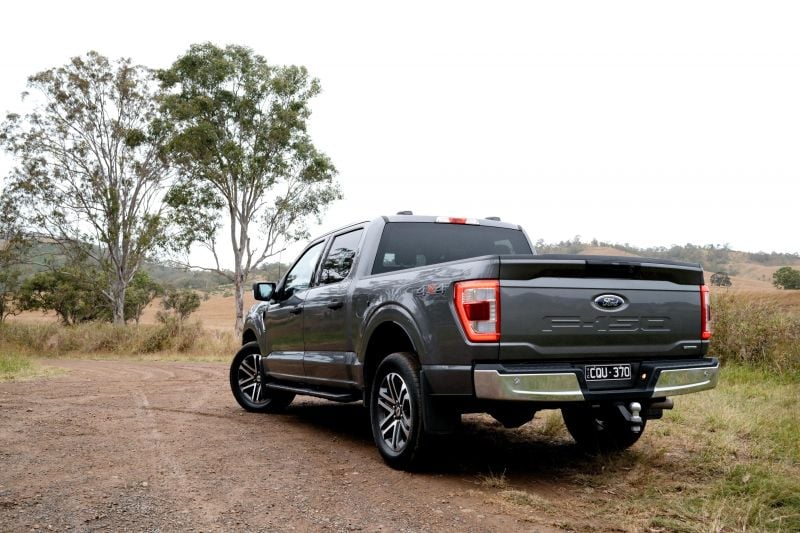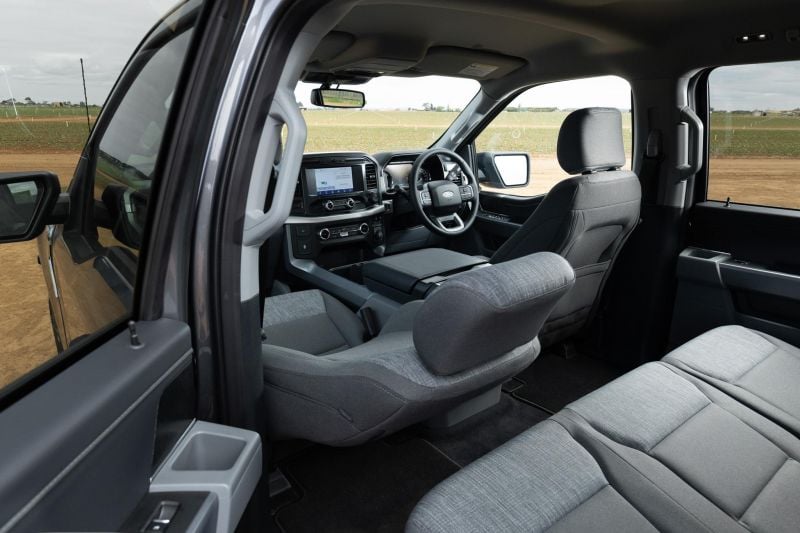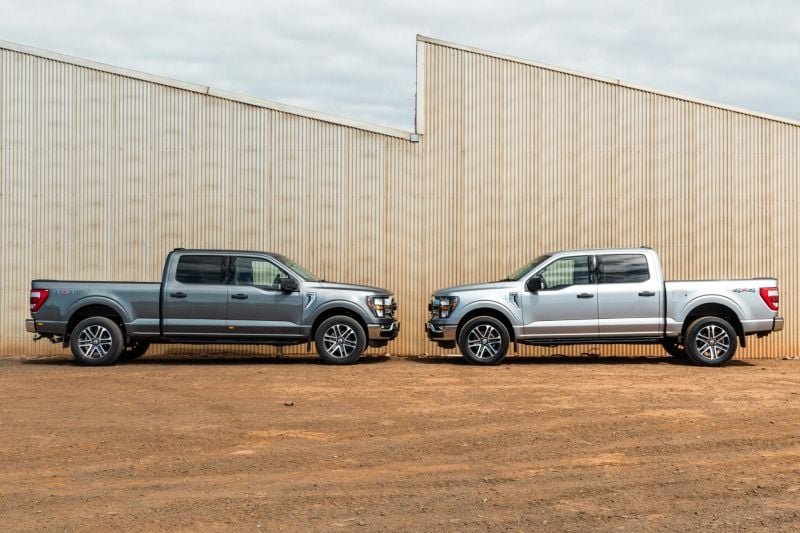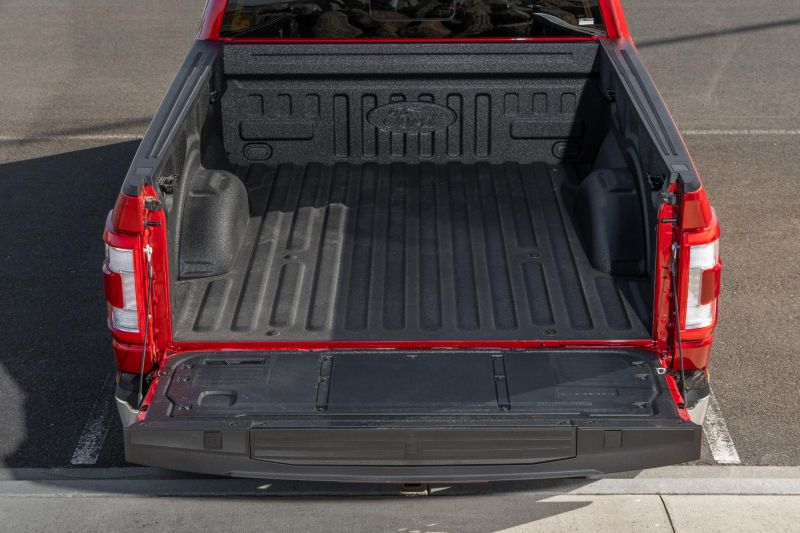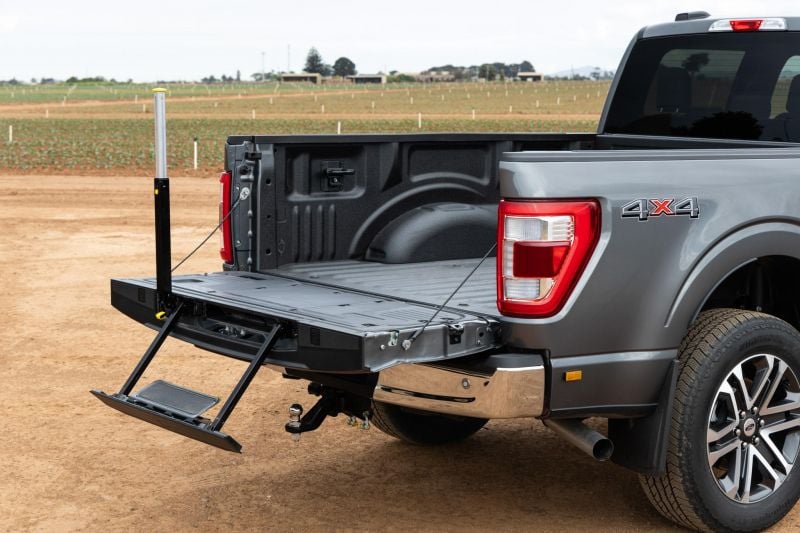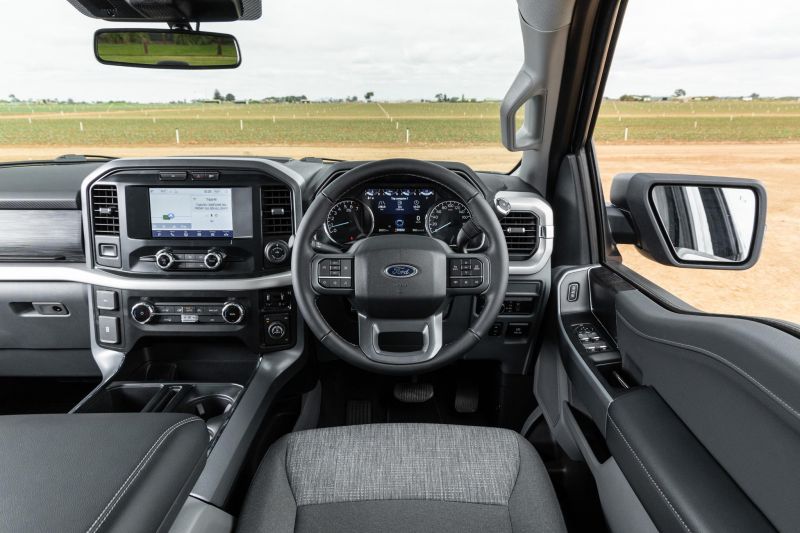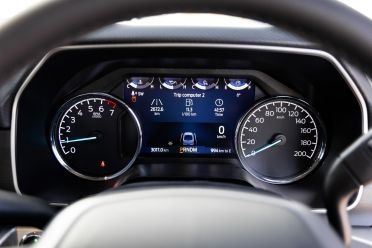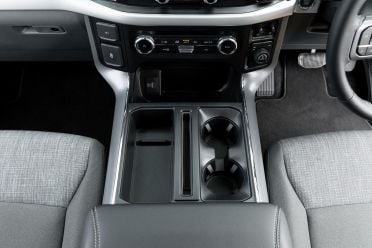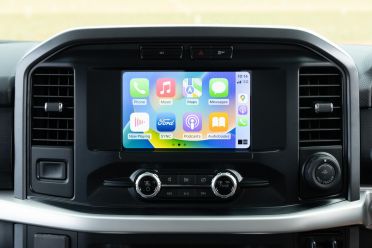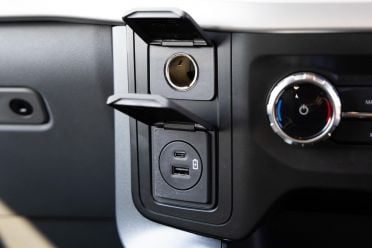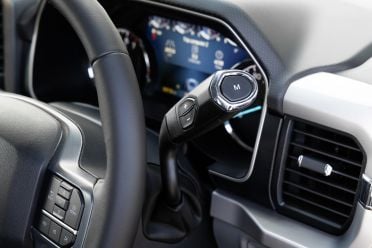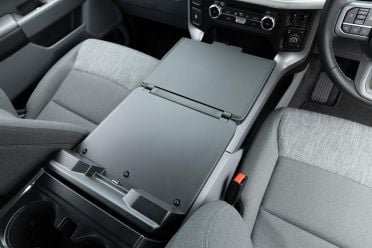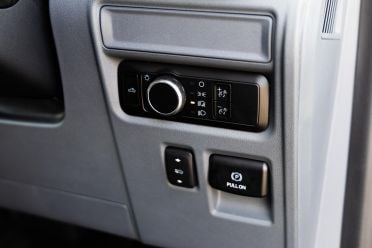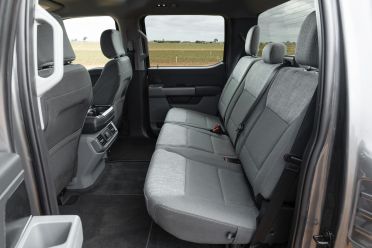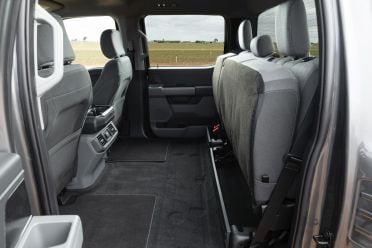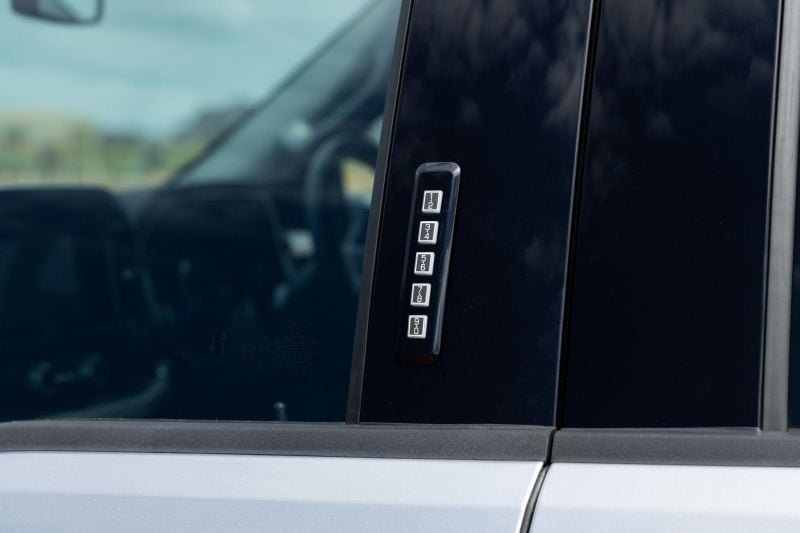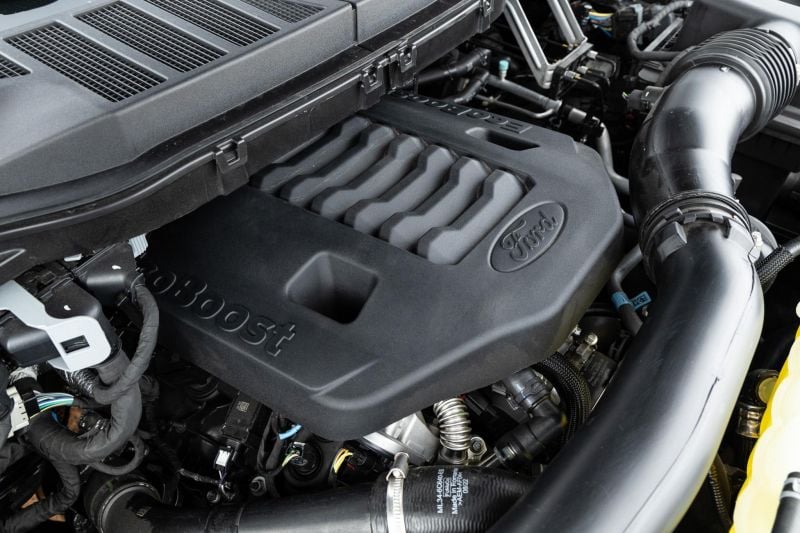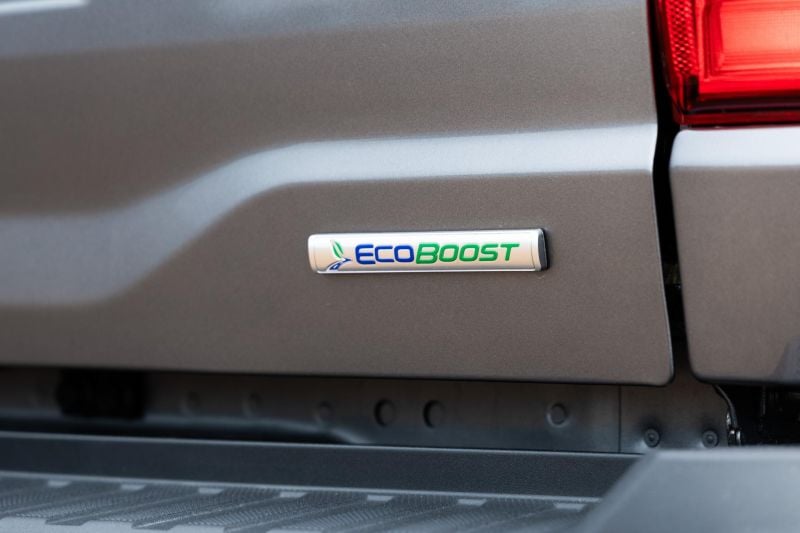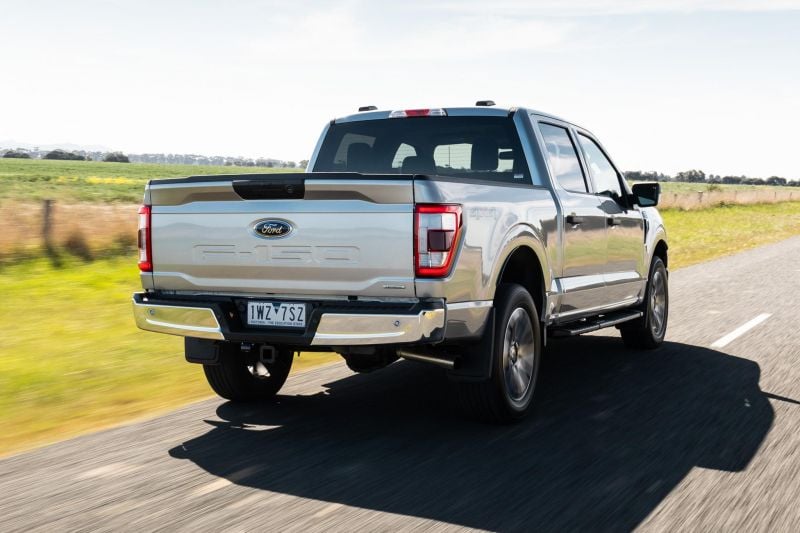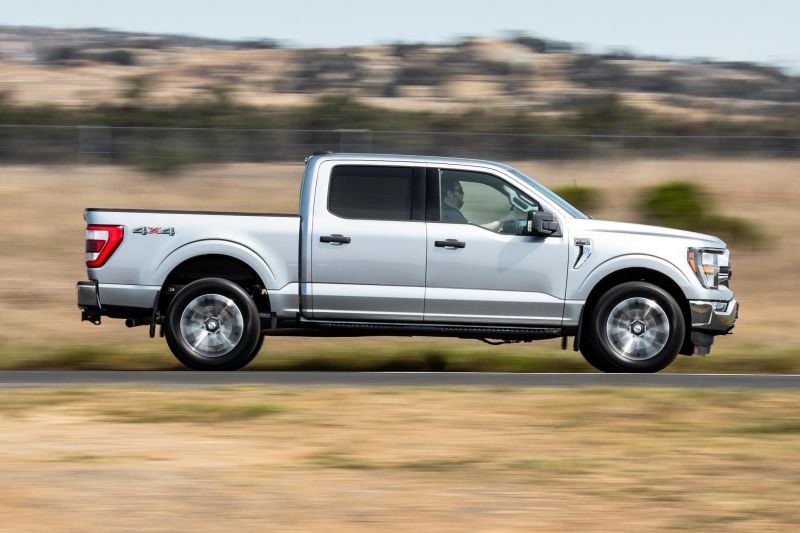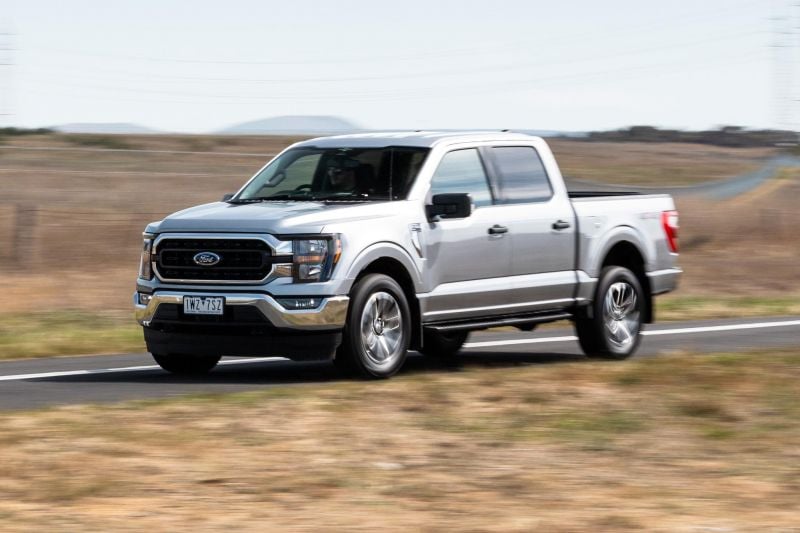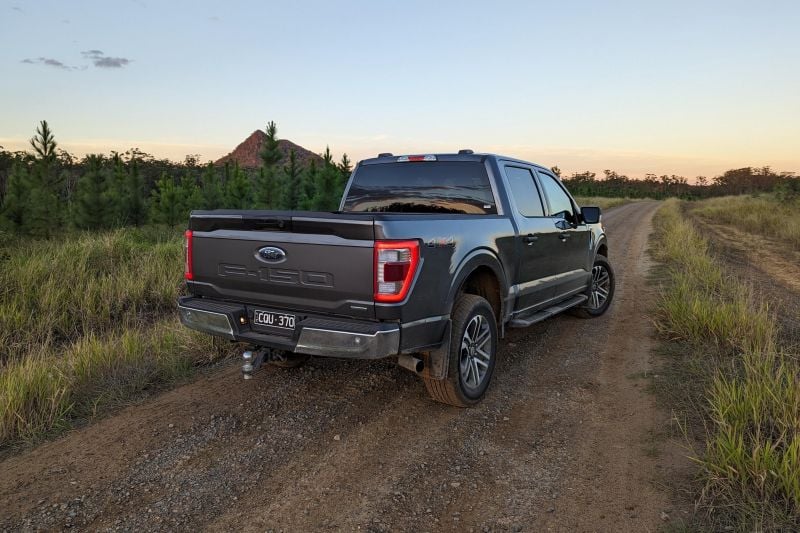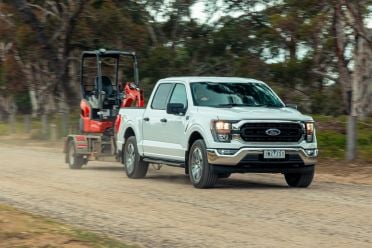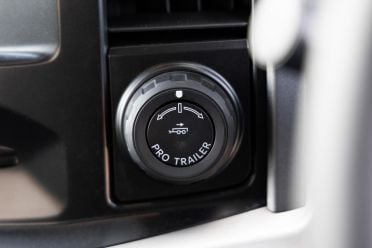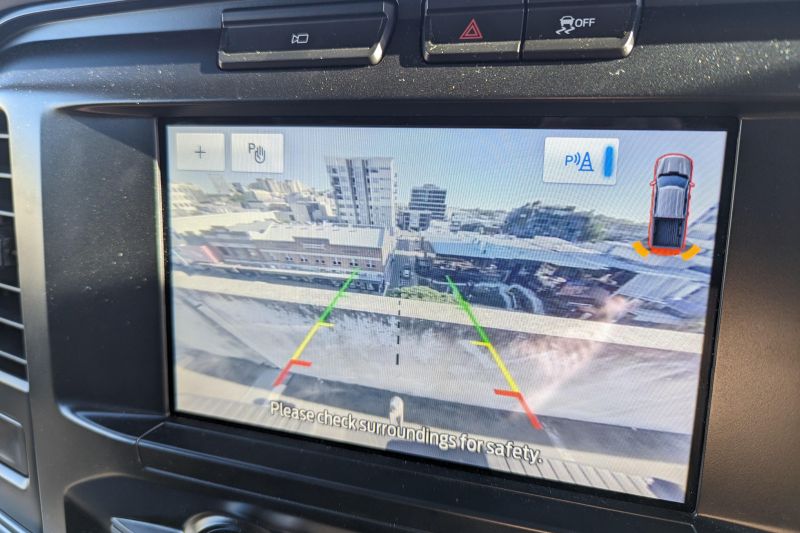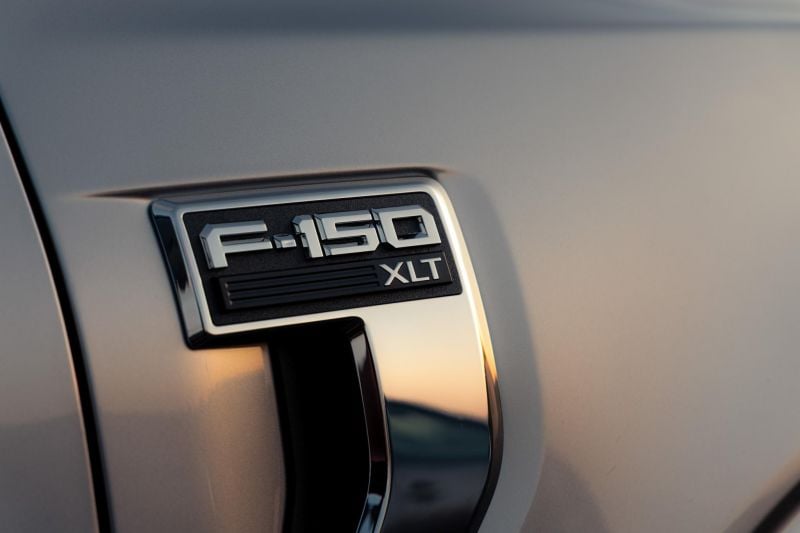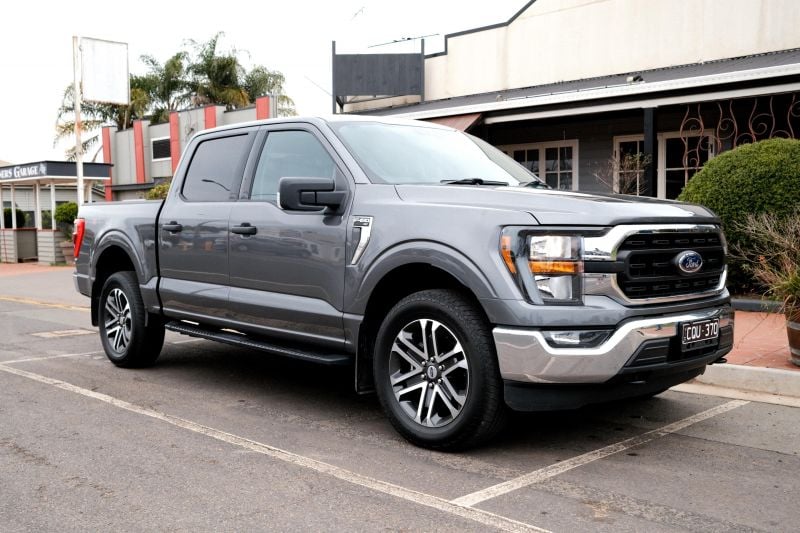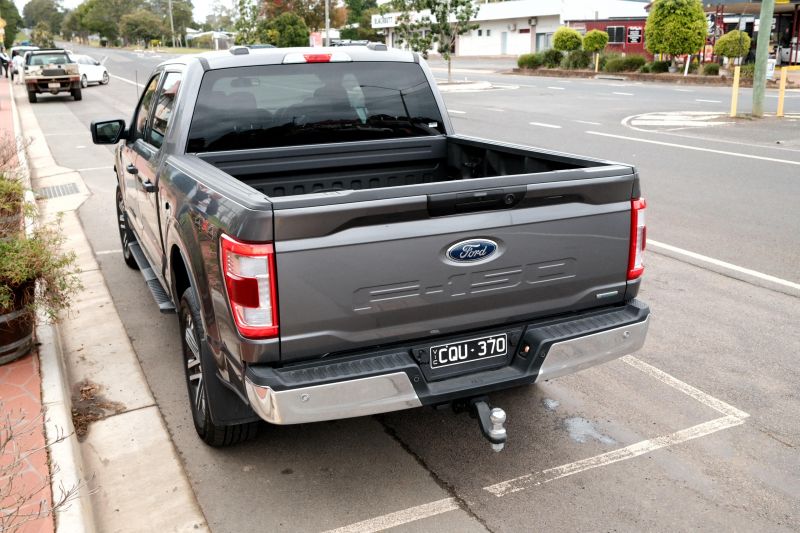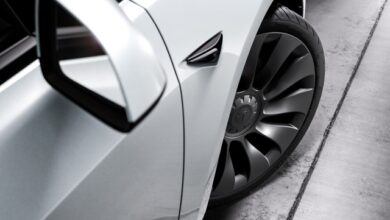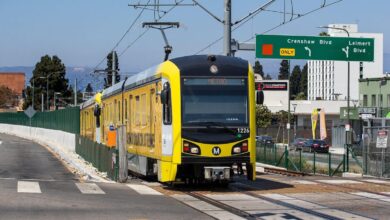2024 Ford F-150 XLT review
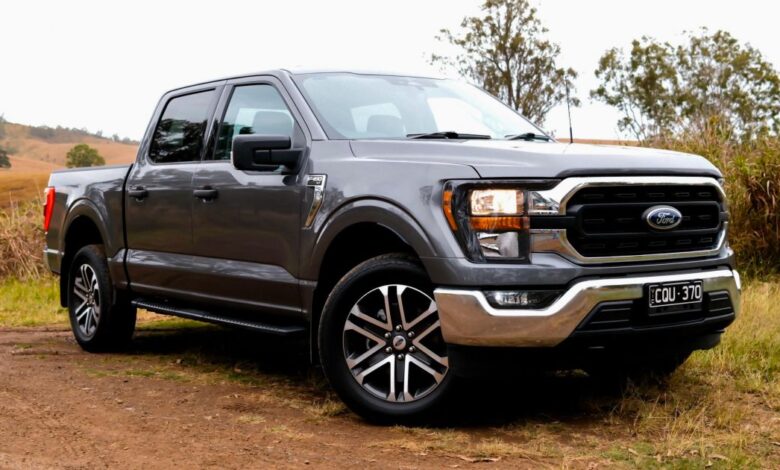
After letting Ram and Chevrolet get the jump on it, Ford finally introduced a factory-backed right-hand drive F-150 in Australia in 2023.
Teething problems aren’t unusual for a first-year model, but the F-150 has had more than its share between two stop-sales and multiple recalls. Ford is compensating owners who have had to endure them, as it works to rectify a number of predominantly lighting-related compliance breaches.
We hope for Ford’s sake these are the last hiccups in the F-150’s rollout. Why? For starters, we feel bad for buyers who have had to put up with this. But also the F-150 is a genuinely good pickup truck that more than stacks up against the rival Ram 1500 and Chevrolet Silverado 1500.
Ford launched the F-150 in just two trim levels and in two lengths, to keep things simple and avoid additional issues.
This short-wheelbase XLT is as basic as a Ford F-150 gets in Australia, complete with cloth seats, halogen headlights, and regular cruise control.
Ok, so it’s not a farm truck – it still comes with features like power-adjustable front seats and blind-spot monitoring, after all. But in a market where buyers are snapping up Silverado LTZs and Ram 1500 Limiteds, not to mention top-spec versions of ‘regular-sized’ utes, the XLT stands out in either a good or bad way, depending on your point of view.
If you’ve read the comments of almost any Ford Australia social media post, you will have seen angry remarks from people who say they won’t buy an F-150 without a V8.
We suspect many of these buyers are the same who deride any Mustang without a V8, even though that vehicle has been offered with four- or six-cylinder power since the very first year.
You can still buy a V8 F-150 in North America, with a 5.0-litre V8 available, not to mention the supercharged 5.2-litre of the Raptor R.
But Americans got over the must-have-a-V8 thing years ago. While six-cylinder engines have been available in typically low-spec F-150s for decades, the first twin-turbo V6 model launched in the US in 2011.
Both the 3.5-litre offered here and the smaller 2.7-litre accounted for around 60 per cent of US-market F-150 sales in 2020.
Do we miss the burble of a V8? Sure. But our advice is to get over it, as the V6 is a very good thing. Besides, Ram is ditching its V8 and Toyota already has, leaving just GM if you simply must have a bent-eight.
Note: The F-150s pictured in this article haven’t received the rectification work.
How does the Ford F-150 compare?
View a detailed breakdown of the Ford F-150 against similarly sized vehicles.

Ford
F-150
How much does the Ford F-150 cost?
For now, the F-150 is offered here with just one engine and two trim levels – XLT and Lariat – though both are available in either short- or long-wheelbase guise.
| Model | Price before on-road costs |
|---|---|
| 2024 Ford F-150 XLT SWB | $106,950 |
| 2024 Ford F-150 XLT LWB | $107,945 |
| 2024 Ford F-150 Lariat SWB | $139,950 |
| 2024 Ford F-150 Lariat LWB | $140,945 |
To see how the F-150 stacks up against its rivals, use our comparison tool.
What is the Ford F-150 like on the inside?
Let’s talk about the F-150’s tub first. After all, this is a load hauler, right?
The tub in the short-wheelbase F-150 measures 1705mm long, 1656mm wide (1285mm between the arches) and 543mm tall. If you step up to the long-wheelbase model, you get an extra 300mm of length.
You get tie-down points in all F-150 models, plus a spray-in bedliner. Only Lariat models get a 12V socket back here, however. The Lariat also boasts a power-opening and closing tailgate.
If you need help clambering up into the XLT’s tub, Ford has included a helpful step that folds out of the tailgate. A pole also lifts up to give you something to grab onto.
It reminds me of the old wives’ tale of NASA spending buckets of money on a pen for astronauts while Russian cosmonauts simply used a pencil.
In short, it seems like a more complicated, likely more expensive to produce solution to a problem Ford Australia solved in the Ranger by just cutting out a bit of the bumper to create a step.
More complex or not, it works well. Another neat touch is the incorporation of a ruler in the moulding of the tailgate – and while this is an American truck, there is thankfully a metric ruler. There are also spaces to slot a drink and pencils.
The courtesy white lamps next to the centre high-mounted brake light will be disabled as part of Ford Australia’s rectification work, as they fall foul of Australian Design Rules (ADRs).
The XLT has always missed out on the Lariat’s clever Zone Lighting feature, as seen on the Ranger. However, Ford says it’s removing Zone Lighting from all Lariat models as it doesn’t meet ADRs.
The base F-150 also has a bright white LED light on the outside of the tailgate, but this appears to be spared from Ford’s required rectification works.
It’s easy to step up into the cabin thanks to the side steps and easy-to-grip grab handles.
Visibility out of the F-150 is excellent, with the front of the cabin feeling particularly airy thanks to the beltline dip towards the mirror – a design cue that’s been on F-150s for 20 years now
Those doors are comfortable to lean on, too, with all four of the F-150’s doors featuring soft-touch trim up top.
The interior is otherwise primarily finished in hard plastic, but it looks functional yet handsome.
No, it doesn’t look upmarket, not helped by the 8.0-inch touchscreen that looks positively lost in the huge dashboard, but overall the interior feels a step above that of the Ranger.
There are a swag of different interior materials used here – on the dashboard alone there at least five – and the trim pieces near the power window controls on the doors look a bit like 1990s Laminex.
Despite this, the interior isn’t too fussy, nor does it look cheap. Those are cloth seats, but the patterned inserts and two-tone grey colour scheme makes them attractive – at least to my eyes. They’re power-adjustable and comfortable, too.
Most importantly, everything feels well screwed together. We didn’t observe any creaks or rattles in the cabin, with the only build quality issue being a bit of plastic flash around the combined light/wiper stalk.
Speaking of things sprouting out of the steering column, the F-150 has a traditional column shifter unlike the console-mounted levers or dials found in rivals. It doesn’t feel cheap like the one in the pre-update Silverado, and is solid and satisfying to use, though getting it in and out of park is a little awkward.
Ahead of the driver is an 8.0-inch instrument cluster screen and analogue gauges, instead of a 12.0-inch fully digital setup like in the Lariat.
While that doesn’t sound as fancy, this is an attractive, legible cluster, and one of the best mixes of analogue and digital. We especially love the attractive blue needles.
The infotainment touchscreen is only an 8.0-inch unit instead of a 12.0-inch one like in the Lariat, which also makes it a step down from the cheaper Ranger.
The controls are all easy to reach, and there are chunky dials for things like volume and climate control adjustment and drive mode selection. Most of the headlight controls are to the right-hand side of the steering column.
As is typical of a Ford, the cabin is bathed in soft, blue lighting. And as is typical of an American pickup, there’s storage aplenty.
You could run a convenience store out of the F-150’s cabin. There’s a deep centre console bin; a huge shelf at the base of the centre console large enough for a 1.5L bottle; bottle holders in the doors; and even little nooks on the sides of the centre console.
There are cupholders plus a phone slot on the centre console, while on the dashboard there’s a glove compartment plus a second enclosed storage compartment above it.
In another clever touch, the centre console bin can be folded forward, making for a flat workspace for your laptop.
This is an excellent family vehicle if you have the space for it, because that huge footprint translates to a huge cabin. There’s 1107mm of second-row legroom, and you can comfortably sit three adults abreast.
The back seat puts the Ranger’s to shame, and there’s a completely flat floor plus USB-A and USB-C outlets and cupholders at the rear of the centre console.
There are also cupholders in the rear doors, though they’re a bit squared-off. We didn’t try, but we suspect a Farmer’s Union would fit perfectly.
Ford has fitted its SecuriCode keyless entry keypad on the F-150, allowing you to enter a keycode to unlock the vehicle instead of using your key.
It’s a clever feature which Ford introduced all the way back in 1980, and which few bothered to copy. But RMA Automotive, could you not have moved the keypad to the driver’s side?
| Dimensions | Ford F-150 XLT SWB |
|---|---|
| Length | 5884mm |
| Height | 1995mm |
| Width | 2430mm (2030mm excl. mirrors) |
| Wheelbase | 3694mm |
| Tub length | 1705mm (at floor) 1662mm (top of tub) |
| Tub width | 1656mm 1285mm (between arches) |
| Tub height | 543mm |
To see how the F-150 stacks up against its rivals, use our comparison tool.
What’s under the bonnet?
While there are twin-turbo V6 hybrid, electric, and V8 powertrains offered in North America, for now Ford Australia is offering only the twin-turbo 3.5-litre EcoBoost V6.
This actually out-punches the Coyote V8 offered overseas, which has the same amount of power but 122Nm less torque.
| Specifications | Ford F-150 XLT SWB |
|---|---|
| Engine | 3.5L twin-turbo V6 |
| Power | 298kW @ 6000rpm |
| Torque | 678Nm @ 3100rpm |
| Transmission | 10-speed automatic |
| Drive type | Part-time four-wheel drive |
| Fuel economy (claimed) | 12.5L/100km |
| Fuel economy (observed) | 13.9L/100km (inner-city, suburban, highway loop) 13.4L/100km (over a week of mixed driving) |
| Fuel tank size | 136L |
| Fuel requirement | 91 RON |
| Braked towing capacity | 4500kg |
| Kerb weight | 2451kg |
| Gross vehicle mass (GVM) | 3220kg |
| Payload | 769kg |
| Ground clearance | 239mm |
| Approach angle | 24.3 degrees |
| Departure angle | 25.3 degrees |
| Breakover angle | 20.0 degrees |
To see how the F-150 stacks up against its rivals, use our comparison tool.
Ford might brand the engine EcoBoost, but it’s not much more efficient in real-world driving than rival V8s.
Across the same drive loop – albeit with slightly different traffic conditions – we achieved 13.7L/100km in a Silverado ZR2, and 13.8L/100km in a Ram 1500 Laramie Sport.
The F-150’s payload figure isn’t anything grand. As is quite common for these full-sized American pickup trucks in Australia, the F-150 can’t carry as much as some smaller utes, and you’re going to hit that maximum figure quite quickly once you start loading up the cabin with people and the tub with their stuff.
It can tow more than a HiLux-class ute, however, with a braked towing capacity of 4500kg.
How does the Ford F-150 drive?
The F-150 is one refined pickup truck.
It’s almost as though Ford wanted to counter complaints of the absence of a V8 burble by making the V6 as smooth as possible.
When the vehicle is idling and you’re outside, it has a lovely, burbly exhaust note.
Once you get inside, however, you barely hear the engine. The predominant sound of the engine is the faint whistle of the turbochargers. What you can otherwise hear of the engine sounds good, but it’s exceptionally quiet.
The cabin is even quiet at highway speeds. There’s a bit of tyre roar, but surprisingly little wind noise despite the huge, chunky exterior mirrors.
The engine mightn’t make a lot of noise, but it produces a lot of thrust. The twin-turbo V6 is effortlessly powerful, and frankly you won’t miss a V8.
The 10-speed auto shifts smoothly and unobtrusively for the most part, and helpfully tells you what gear you’re in at any given moment.
The auto will shift to the highest possible gear for the sake of efficiency, and we did observe an annoying habit of holding onto seventh gear on steep descents.
In response, I wanted to manually shift gears… but Ford makes this exceedingly difficult. It uses the stupid plus/minus buttons some American brands seem so enamoured with, which never feel as intuitive as flicking a paddle or moving a shifter.
Making this even worse is that they are placed on the column shifter, where they’re obscured by the rim of the steering wheel, and you have to awkwardly reach over to press them. Using these feels as awkward as picking something out of soup with your fingers.
Also awkward is parking the vehicle. In XLT guise, the F-150 has only a washed-out reversing camera and rear parking sensors.
There’s no front camera, nor are there front sensors, which isn’t ideal given the front kind of slopes away and then drops off like a cliff, making it hard to judge where the vehicle ends.
A vehicle this large is already going to be a hassle to park, and the absence of these features is keenly felt.
The steering also doesn’t lighten up much at low speeds, while you seem to reach full lock quickly, making it feel especially cumbersome to park.
Despite this, once you awkwardly manoeuvre out of a tight carpark and get out on the open road, it doesn’t feel too cumbersome.
The steering is nicely weighted, and has some heft to it without being too high-effort. It’s a bit of a cliche, but the F-150 does shrink around you.
On some narrower country roads the F-150’s width was noticed – more so by a colleague in the car behind me, who commented it looked like it was going to fall off the road edge.
On these rural roads, the F-150 proved exceptionally comfortable. Once in a while, the rear fidgets a smidge, and there’s a touch of frame shake. So, it’s still a ute then, but this is one very cushy ute.
It manages to offer a pliant ride without ever feeling uncontrolled, with only a bit of float over, say, rural bridges.
The F-150 is a vehicle you can point at a poorly surfaced road and it’ll just gobble it up, loping along utterly fuss-free. Pothole? What pothole?
You’re never jolted around in the F-150, and it proved comfortable when we took it off road as well.
We took the F-150 on some dirt forestry trails, as well as some rockier, more challenging trails, getting it muddy in the process.
It’s going to feel a bit wide on some trails, but it always felt comfortable and surefooted. We didn’t take it on anything so challenging we needed to pop it into 4L or lock the rear differential, but that equipment is there if you need it.
You can also toggle between slippery, deep snow, sand and mud/ruts drive modes, as well as normal, eco and tow/haul modes. These are all activated via a chunky rotary dial.
One significant drawback, particularly if you travel a lot through rural areas, is the use of halogen headlights.
Also, unlike the Lariat, the four-wheel drive system in the XLT is only a part-time setup, so there’s no 4A mode you can use on pavement.
All F-150 models in Australia come with Ford Pro Trailer Back-Up Assist.
This allows you to effectively steer your trailer instead of your vehicle provided you equip a yaw sensor to your trailer and then program its parameters on the touchscreen, which you then use to see what’s going on behind you.
In previous testing of this feature, we found it to be clever but unfortunately a bit harder to use in XLT models due to their smaller, lower-resolution touchscreen.
What do you get?
In terms of standard equipment, the F-150 XLT does feel like a downgrade from an up-spec Ranger. There’s quite a bit less standard kit than the Lariat, but for around $33,000 more the top-spec F-150 would want to have more equipment…
F-150 XLT standard equipment:
- Integrated trailer brake controller
- 4.5t-rated tow hitch and 70mm tow ball
- Pro Trailer Back-up Assist
- Electronic locking rear differential
- 2 x front recovery hooks
- Skid plates for front differential, transfer case and fuel tank
- 20-inch alloy wheels in 275/60 R20 BSW ATT all-terrain tyres
- 18-inch alloy spare wheel
- Automatic halogen headlights
- Tailgate step, ruler
- Spray-in tub liner
- Electronic park brake
- Keypad entry
- Proximity entry with push-button start
- FordPass Connect
- Rear privacy glass
- Cloth upholstery
- 12-way power driver’s seat with power lumbar
- 10-way power passenger seat with power lumbar
- Power-adjustable pedals
- Dual-zone climate control
- 8.0-inch touchscreen infotainment system
- Apple CarPlay and Android Auto
- 8.0-inch digital instrument cluster screen
- Satellite navigation
- DAB+ digital radio
- 7-speaker sound system
- Tilt and telescopic steering wheel adjustment
- Electro-chromatic rear-view mirror
- Storage under rear seats
Is the Ford F-150 safe?
The Ford F-150 has never been tested by ANCAP.
Standard safety equipment on the XLT includes:
- Autonomous emergency braking
- Blind-spot monitoring with trailer tow coverage
- Lane-keep assist
- Rear cross-traffic alert with trailer tow coverage
- Reversing camera
- Rear parking sensors
- Tyre pressure monitoring
- Front, front-side and curtain airbags
You need to step up to the Lariat to get:
- Adaptive cruise control with stop/go
- Lane centring
- Evasive steering assist
- Front parking sensors
- Surround-view camera
- Traffic sign recognition
How much does the Ford F-150 cost to run?
The F-150 is backed by a five-year, unlimited-kilometre warranty.
| Running costs | Ford F-150 XLT SWB |
|---|---|
| Warranty | 5 years, unlimited kilometres |
| Service intervals | 12 months or 15,000 kilometres |
| Capped price servicing | 4 years |
| Total capped price service cost | $1716 (4 x $429) |
Servicing is required every 12 months or 15,000 kilometres, whichever comes first, with the first four services capped at $429 each. That’s in stark contrast with rival Ram and Chevrolet pickups, where there’s no capped-price servicing available.
Ford Australia is also currently offering the first five services for free for eligible buyers. You can read more on the company’s website.
CarExpert’s Take on the Ford F-150
The Ford F-150 is a very good pickup truck that’s been let down by a lousy rollout.
Not only did Ford wait until after GM and Stellantis entered the pickup market in Australia, it also used a different company for the local remanufacturing that has made some rookie errors when it comes to compliance.
One wonders why Ford didn’t simply use Walkinshaw, as GM, Stellantis and Toyota have done. If this was to save a buck, between recalls, compliance fixes and stop-sales that call has backfired spectacularly.
We hope this is the last of the issues with the F-150’s local remanufacturing, as this deserves to be as successful as the likes of the 1500 and Silverado.
Ok, so the smaller engine doesn’t work out to be that much more efficient in real-world use than the Ram 1500’s V8, and it doesn’t sound as good.
The XLT also has some strange feature omissions for a vehicle this expensive – the lack of front parking sensors and a front camera, for example, make this a real pain to park.
But this is an impressively refined vehicle which, parking aside, is particularly user-friendly. It’s powerful and comfortable, while undercutting its major rivals on price and offering a more generous after-sales package.
The Ford F-Series pickup range is the US’ best-selling vehicle for a reason, and it’s a shame that a clumsy rollout may have damaged the truck’s reputation.
Click the images for the full gallery, with additional photography by Eliot Tsai
MORE: Buy a Ford F-150
MORE: Everything Ford F-150
